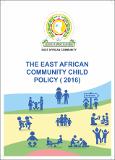| dc.description.abstract | The EAC Treaty (Article 120 (c)) calls upon Partner States to develop and adopt a common approach towards marginalised groups including children. ¬is undertaking is anchored by the EAC’s commitment to the principle of good governance including adherence to, among other things, the principles of democracy, the rule of law, accountability, transparency, social justice, equal opportunities, gender equality, as well as the recognition, promotion and protection of human and peoples’ rights in accordance with the provisions of the African Charter on Human and Peoples’ Rights (Article 6(d)).
EAC Partner States have further, in their individual capacity, signed and/or ratified a range of documents on children’s rights, and adopted a variety of legislative, policy and programmatic measures to implement the resulting obligations. ¬us far however, there has been no common approach towards the implementation of children’s rights at the sub regional level.
EAC Child Policy is the culmination of various processes geared towards the harmonisation of standards on and approaches to the implementation of child rights in the EAC. The hallmarks of these processes include the Bujumbura Declaration on Child Rights in the EAC of 2012, and the subsequent Directive of the 25th Meeting of the Council of Ministers calling on the EAC Secretariat to develop a Policy on Children’s Rights and Wellbeing (EAC/CM 25) Directive 23). In 2013, the EAC Secretariat with the support of the Inter-Agency Working Group, commenced the process of developing the Policy.
The Policy seeks to:
a) Provide a functional, regional, policy, and institutional framework to facilitate the development, co-ordination, harmonisation and strengthening of national efforts geared towards the promotion of children’s rights and child wellbeing.
b) Guide Partner States in prioritisation and integration of child’s rights concerns in their planning, budgeting and resource mobilisation processes.
c) Establish and strengthen existing inter-country partnerships on the promotion of child rights, child protection and child well being
d) Guide Partner States in the monitoring and evaluation of the Implementation of, of the UNCRC, ACRWC and national commitments to children’s rights
Strengthen capacity in research, advocacy, knowledge management and innovation on child rights and child wellbeing. | en_US |

